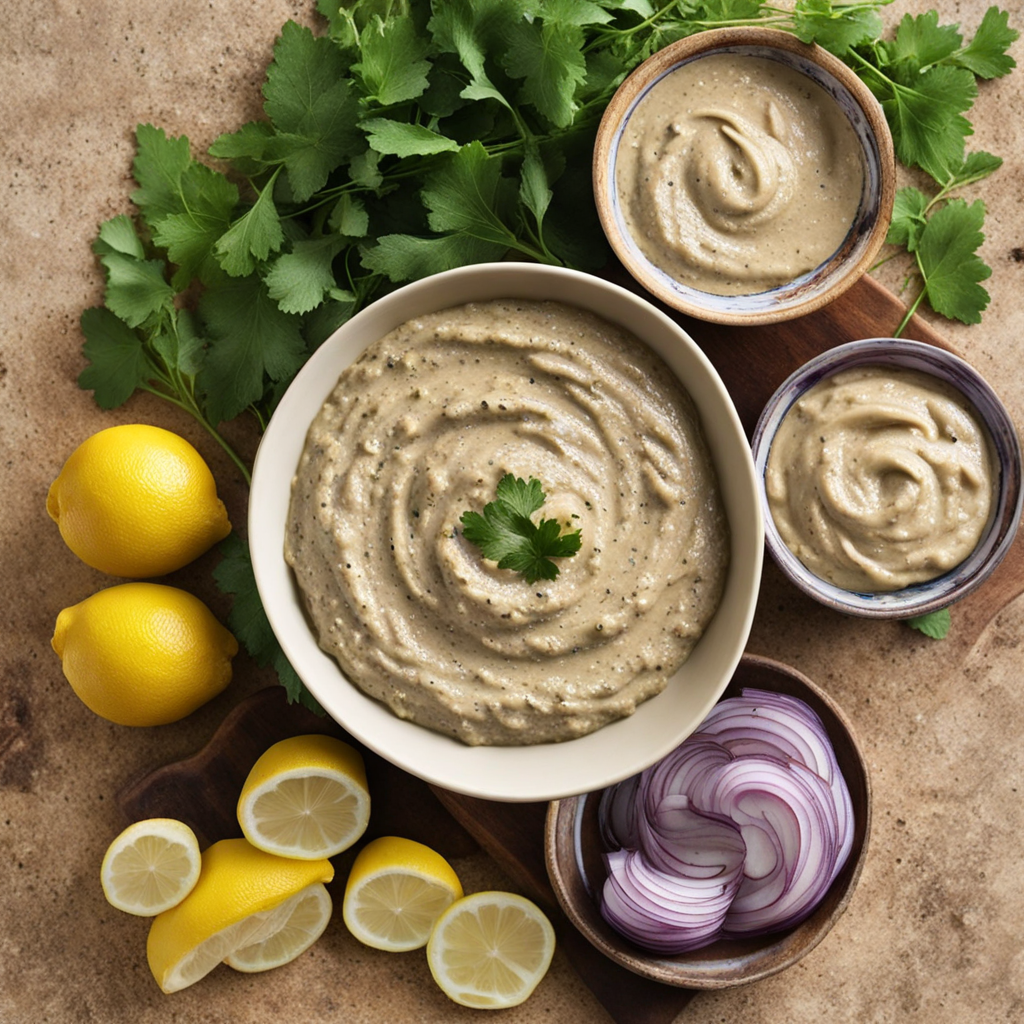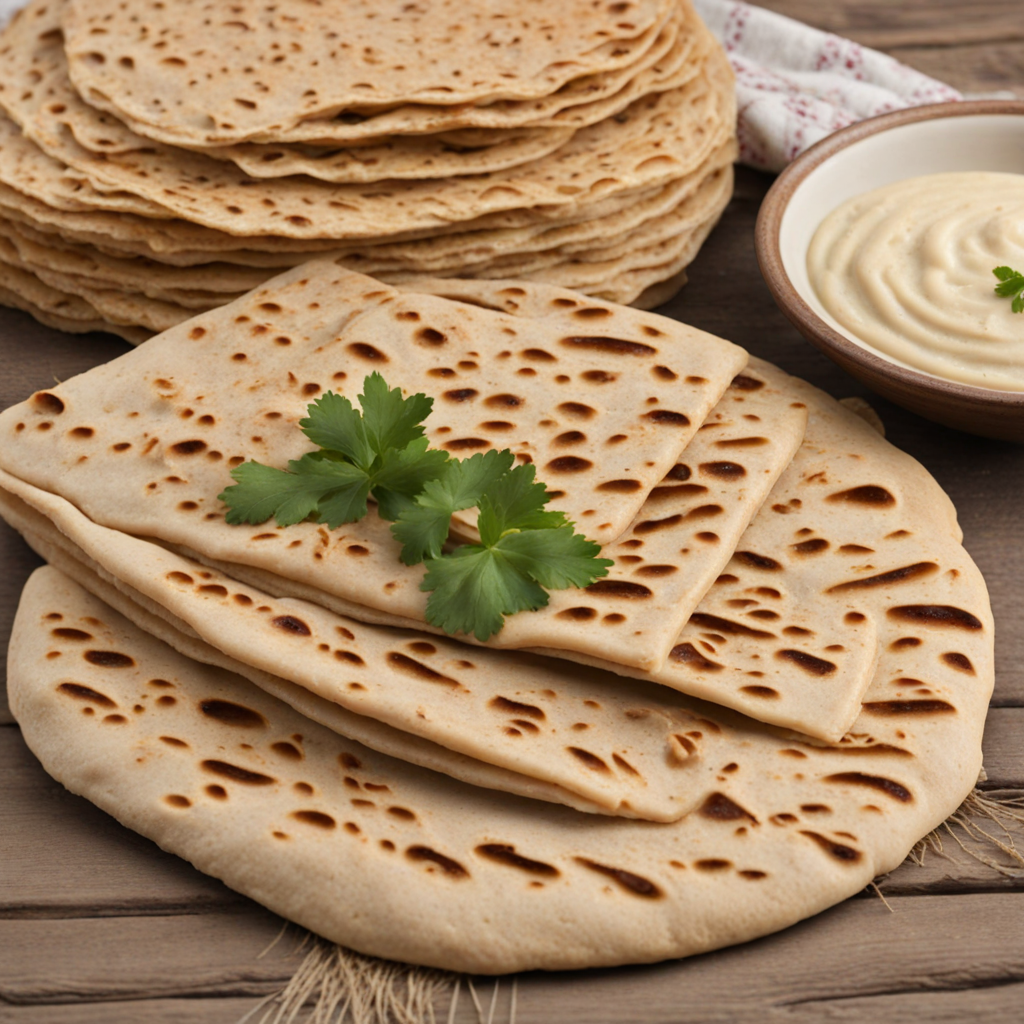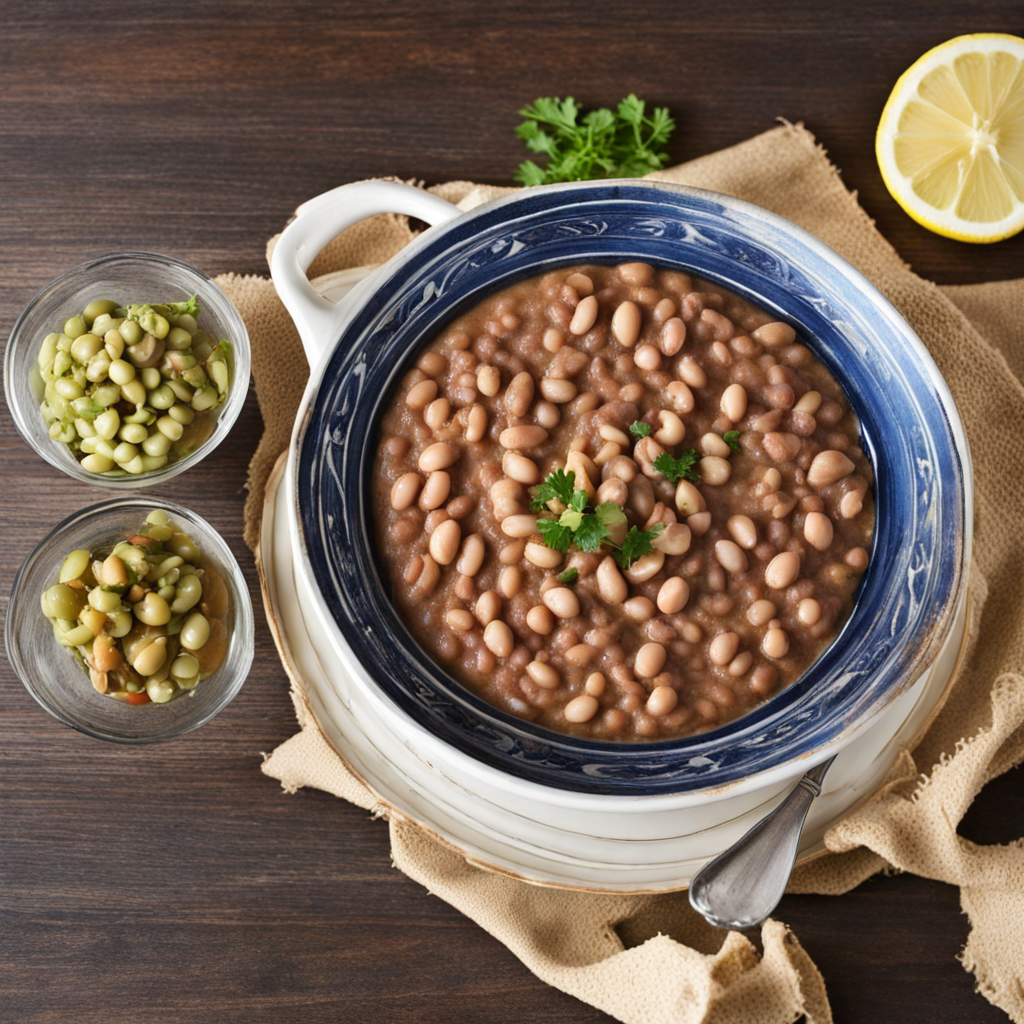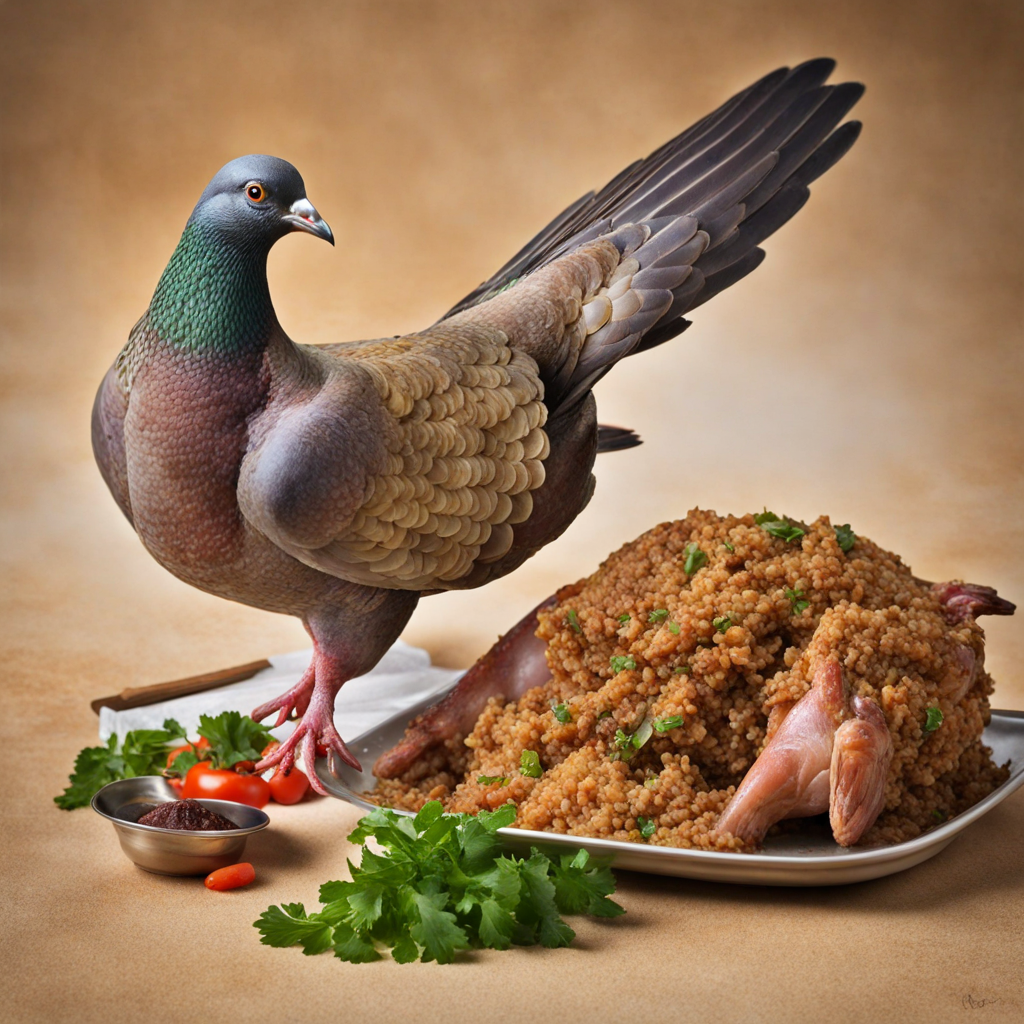Baba Ganoush
Baba Ganoush is a delicious and creamy dip that hails from the rich culinary traditions of Egypt. This delectable dish is primarily made from roasted eggplant, which is charred to perfection to impart a smoky flavor that sets it apart from other dips. The eggplant is then blended with tahini, a paste made from ground sesame seeds, which contributes a nutty richness. The combination of these two key ingredients creates a velvety texture that is both satisfying and inviting, making it a perfect accompaniment to various dishes or a delightful stand-alone snack. To elevate its flavor profile, Baba Ganoush is typically seasoned with garlic, lemon juice, and olive oil. The garlic adds a zesty kick, while the fresh lemon juice brightens the dish with a tangy freshness. A drizzle of high-quality olive oil provides a smooth finish, enhancing the overall taste experience. Often, this dish is garnished with fresh parsley or pomegranate seeds, adding a pop of color and additional layers of flavor that make every bite a sensory delight. This versatile dip can be enjoyed in countless ways—spread on warm pita bread, served alongside fresh vegetables, or used as a flavorful topping for grilled meats. Its rich, smoky, and slightly tangy notes create a taste sensation that appeals to a wide range of palates. Whether you're a fan of Middle Eastern cuisine or simply looking to explore new flavors, Baba Ganoush is a must-try dish that promises to transport you to the heart of Egyptian culinary heritage.
How It Became This Dish
Baba Ghanoush: A Culinary Gem from Egypt Baba Ghanoush, a creamy, smoky eggplant dip, is one of the most celebrated dishes in Middle Eastern cuisine, and its history is as rich and varied as its flavor. Often served as part of a mezze platter alongside other delights like hummus and tabbouleh, Baba Ghanoush (which translates to "spoiled father" in Arabic, a playful reference to its richness) has roots that stretch back centuries, intertwined with the social and cultural fabric of the Mediterranean region. Origins The origins of Baba Ghanoush can be traced back to the Levant, particularly in the regions that encompass modern-day Lebanon and Syria. However, it is in Egypt where the dish has found its most profound cultural resonance. The primary ingredient, eggplant, is believed to have originated in India and made its way to the Mediterranean through trade routes. Cultivated for centuries, eggplants became a staple in various cuisines, but it was in Arab culinary traditions that they truly flourished. The earliest mentions of Baba Ghanoush appear in 13th-century Arabic cookbooks, where recipes for eggplant-based dishes were already being documented. However, the modern interpretation of Baba Ghanoush is thought to have evolved around the 20th century, when the dish began to gain popularity beyond its traditional borders. Cultural Significance In Egypt, Baba Ghanoush is more than just a food item; it embodies community, hospitality, and the essence of shared meals. Traditionally, this dip is served during gatherings and celebrations, symbolizing the warmth of Egyptian hospitality. The preparation of Baba Ghanoush often serves as a communal activity, with family members gathering to roast the eggplants over an open flame, which not only infuses the dish with a distinct smoky flavor but also fosters a sense of togetherness. The dish is also associated with the broader Mediterranean diet, which emphasizes fresh, seasonal ingredients. Baba Ghanoush aligns perfectly with this philosophy, as it is made with simple, wholesome ingredients: roasted eggplants, tahini (a sesame seed paste), garlic, lemon juice, and olive oil. This combination reflects the agricultural bounty of the region and the importance of local produce in Egyptian cooking. The Recipe Evolution The basic recipe for Baba Ghanoush has remained relatively consistent over the years, but variations abound depending on regional preferences. In Egypt, the eggplants are typically roasted until they are soft and smoky, then mashed and mixed with tahini, garlic, and lemon juice. The texture can range from smooth and creamy to chunky, depending on personal preference or regional variations. Some variations include additional ingredients such as yogurt, pomegranate seeds, or spices like cumin and paprika, which can enhance the depth of flavor. The use of olive oil, often drizzled on top before serving, adds richness and a glossy finish. In some regions, the dish is garnished with fresh parsley or mint, providing a fresh contrast to the deep, smoky notes of the eggplant. Baba Ghanoush in Modern Cuisine As globalization has influenced food culture, Baba Ghanoush has transcended its traditional boundaries. It has become a beloved dish in many parts of the world, particularly in Western cuisine, where it is often found in Middle Eastern restaurants or as part of vegetarian and vegan menus. The rise of health consciousness and plant-based eating has also contributed to its popularity, as Baba Ghanoush is naturally vegan and gluten-free, making it an appealing option for a broad audience. In contemporary culinary circles, chefs have begun to experiment with Baba Ghanoush, incorporating modern techniques and flavors. Some have introduced smoked paprika or harissa for added heat, while others have used unconventional ingredients like beetroot or roasted red peppers to create colorful variations of the classic dip. These innovations reflect a broader trend in the culinary world, where traditional dishes are reimagined to suit evolving tastes while still paying homage to their origins. The Globalization of Baba Ghanoush The globalization of Baba Ghanoush is not just limited to its presence in restaurants; it has also made its way into home kitchens around the world. With the growing interest in Middle Eastern cuisine, many people have embraced cooking Baba Ghanoush at home, often experimenting with recipes found online or in cookbooks. The dish's simplicity and adaptability make it an excellent choice for home cooks, whether they are seasoned chefs or novices in the kitchen. Social media has played a significant role in popularizing Baba Ghanoush, with images of the dish flooding platforms like Instagram and Pinterest. The visual appeal of the creamy dip, often served in vibrant bowls and garnished with colorful toppings, makes it a favorite among food influencers and bloggers. This digital exposure has introduced Baba Ghanoush to new audiences, further solidifying its status as a staple of Middle Eastern cuisine. Conclusion Baba Ghanoush is a dish steeped in history, culture, and tradition. From its ancient roots in the Levant to its rise as a global favorite, it has maintained its essence while adapting to the tastes and preferences of different cultures. As a symbol of Egyptian hospitality and community, Baba Ghanoush continues to be a beloved part of the culinary landscape, inviting people to gather around the table and share in its delightful flavors. Whether enjoyed in a bustling Cairo market, a family gathering in Alexandria, or a trendy café in New York City, Baba Ghanoush remains a testament to the enduring power of food to connect people across time and space. Its journey from a simple eggplant dip to an international sensation reflects the dynamic nature of culinary traditions and their ability to evolve while remaining rooted in their cultural significance.
You may like
Discover local flavors from Egypt







